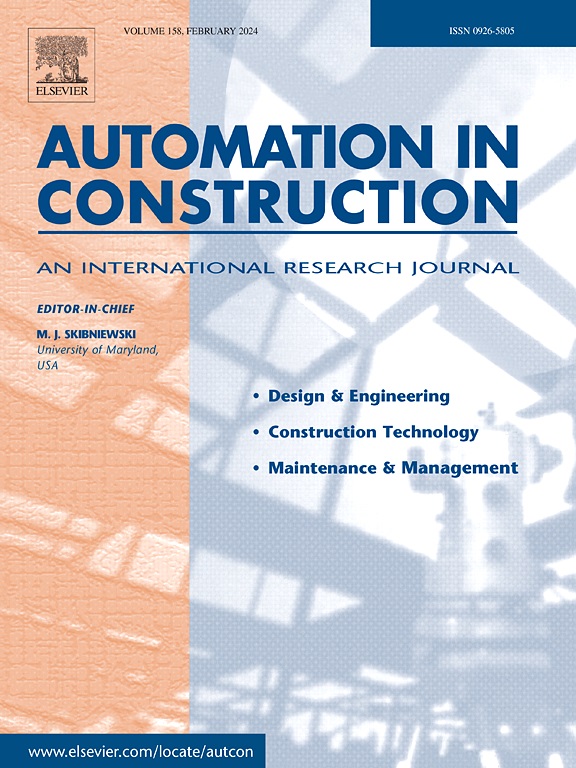利用全场测量贝叶斯连续小波变换识别电缆的时变阻尼
IF 9.6
1区 工程技术
Q1 CONSTRUCTION & BUILDING TECHNOLOGY
引用次数: 0
摘要
电缆是斜拉桥的主要承重构件,因此其阻尼水平对结构安全评估至关重要。由于结果的离散性,传统的运行模态分析(OMA)在阻尼识别方面面临挑战,而有限的传感器部署往往导致关键模态信息的丢失。本文提出了一种贝叶斯连续小波变换与 Gabor 小波(BCWT-G)方法,用于利用全场测量数据进行时变阻尼识别。结合金字塔嫁接网络(PGNet)和邻帧像素拟合(NFPF)的计算机视觉技术被用于精确捕捉全场振动数据。然后提取这些数据的时频域属性,并将其纳入贝叶斯概率估计框架以进行模态更新。通过使用基于物理的图形模型(PBGM)进行数值模拟,以及在复杂环境下进行实际电缆测试,验证了所提出的方法在识别电缆时变动态特性方面的有效性和稳健性。本文章由计算机程序翻译,如有差异,请以英文原文为准。
Bayesian continuous wavelet transform for time-varying damping identification of cables using full-field measurement
Cables serve as the primary load-bearing element in cable-stayed bridges, making their damping level critical for structural safety evaluation. Traditional operational modal analysis (OMA) faces challenges in damping identification due to result discreteness, and limited sensor deployment often leads to the loss of crucial modal information. This paper proposes a Bayesian continuous wavelet transform with Gabor wavelet (BCWT-G) method for time-varying damping identification using full-field measurement data. A computer vision technique combining the pyramid grafting network (PGNet) with neighboring frame pixel fitting (NFPF) is used to accurately capture full-field vibration data. The time-frequency domain properties of these data are then extracted and incorporated into a Bayesian probabilistic estimation framework for modal updating. The proposed method was validated through numerical simulations using a physics-based graphics model (PBGM), and actual cable testing under complex environments, demonstrating its effectiveness and robustness in identifying the time-varying dynamic characteristics of cables.
求助全文
通过发布文献求助,成功后即可免费获取论文全文。
去求助
来源期刊

Automation in Construction
工程技术-工程:土木
CiteScore
19.20
自引率
16.50%
发文量
563
审稿时长
8.5 months
期刊介绍:
Automation in Construction is an international journal that focuses on publishing original research papers related to the use of Information Technologies in various aspects of the construction industry. The journal covers topics such as design, engineering, construction technologies, and the maintenance and management of constructed facilities.
The scope of Automation in Construction is extensive and covers all stages of the construction life cycle. This includes initial planning and design, construction of the facility, operation and maintenance, as well as the eventual dismantling and recycling of buildings and engineering structures.
 求助内容:
求助内容: 应助结果提醒方式:
应助结果提醒方式:


